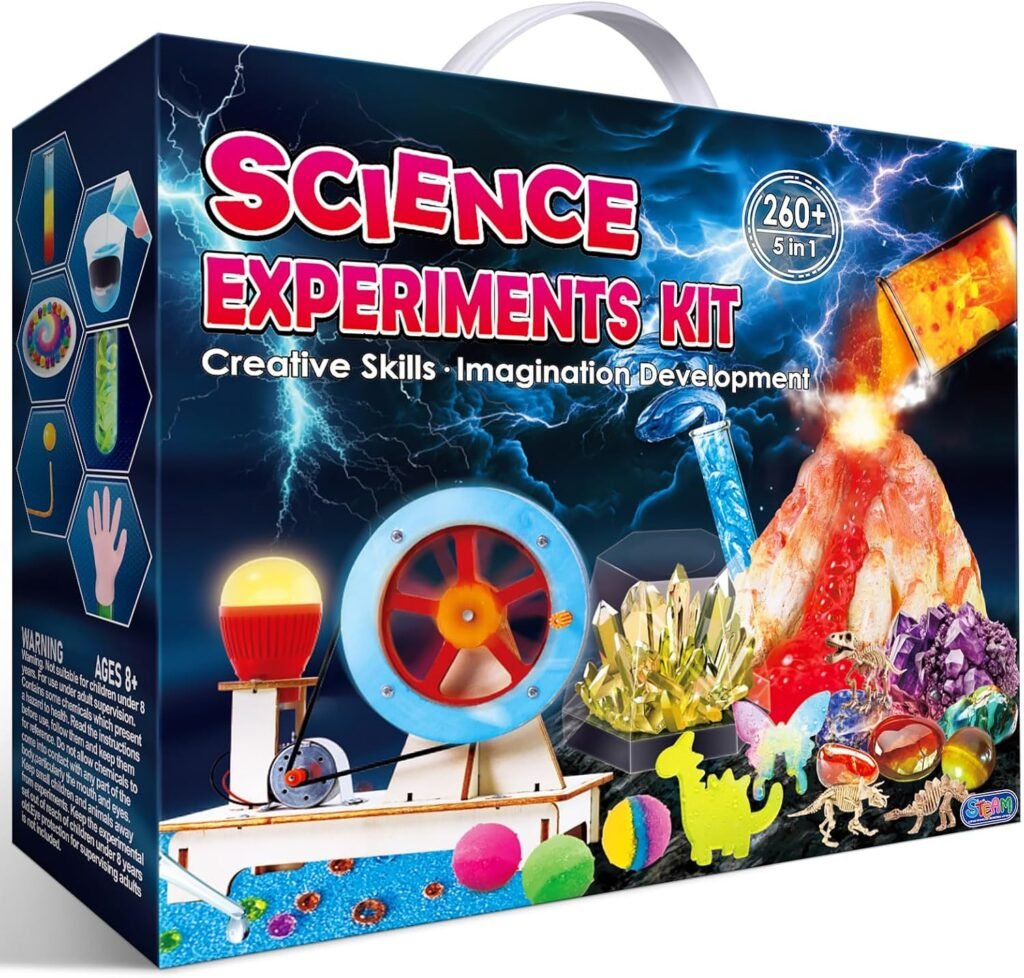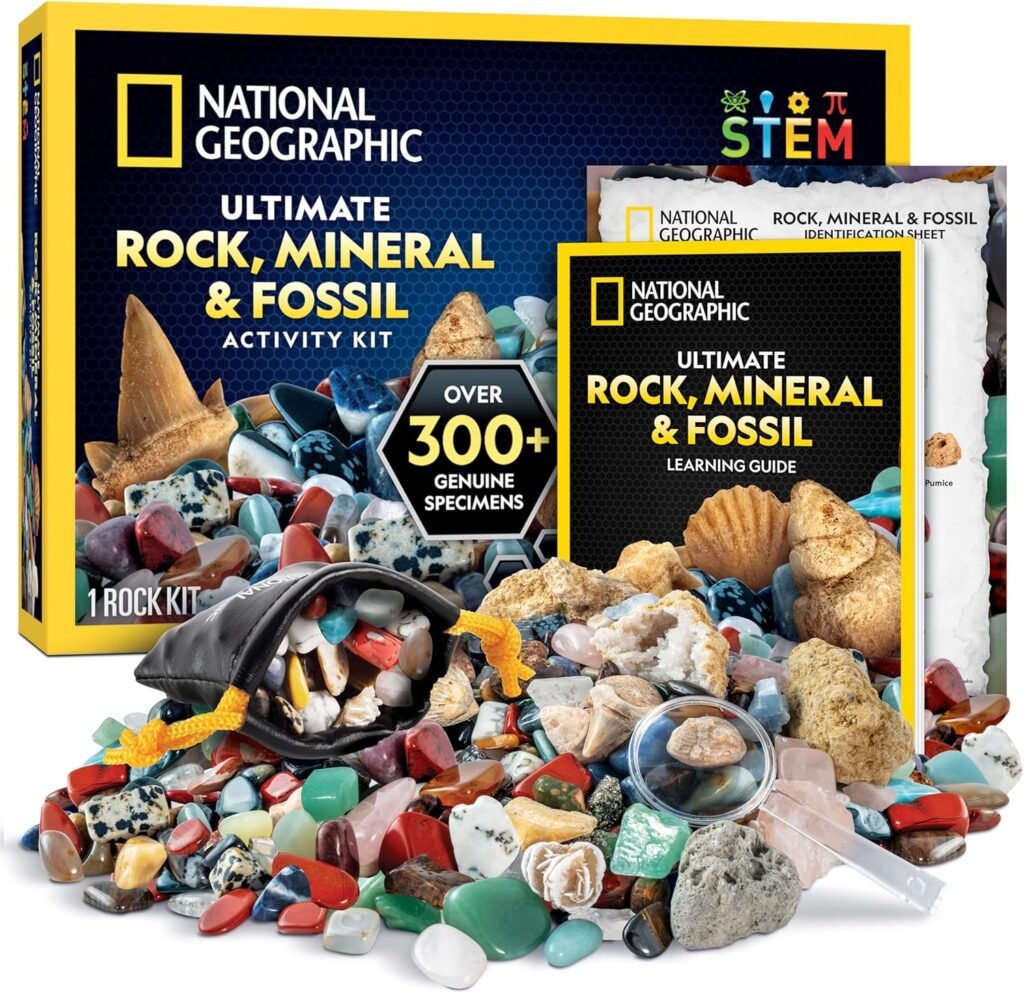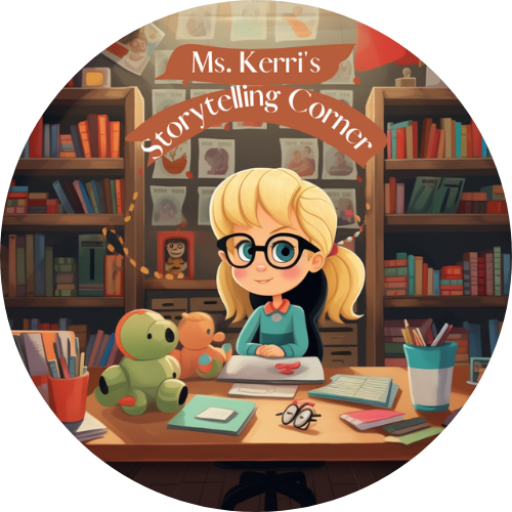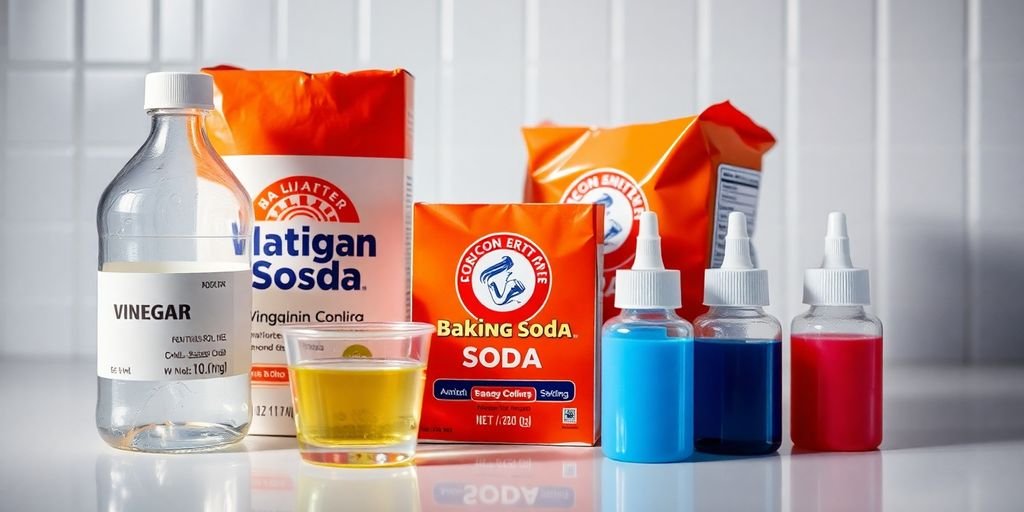Ever looked around your kitchen and thought, “Hey, I could do some science here!”? Well, you’re in luck! Kids love getting hands-on, and what better way to learn than with stuff you already have at home? No need for fancy equipment or hard-to-find ingredients. Just simple, fun, and educational experiments using everyday kitchen items. Perfect for curious minds and rainy days. Let’s dive into these six easy science experiments that will have your kids saying, “Wow!”
Key Takeaways
- Baking soda is a versatile ingredient for many experiments, like making a volcano.
- Vinegar can be used to dissolve eggshells or create fizzy reactions.
- Eggs are great for learning about density and chemical reactions.
- Cornstarch can be mixed with water to create oobleck, a non-Newtonian fluid.
- Food coloring can turn simple experiments into colorful fun.
1. Baking Soda

Baking soda, or sodium bicarbonate, is a staple in many kitchens and a fantastic ingredient for simple science experiments. It’s not just for baking cookies; it can create some fun and educational reactions too.
Experiment: Baking Soda Volcano
Creating a baking soda volcano is a classic experiment that’s both exciting and educational. Here’s how you can make your own:
- Build Your Volcano: Use clay or playdough to shape a volcano around a small bottle or cup.
- Ingredients: In a separate container, mix 1 tablespoon of baking soda with a few drops of food coloring for a colorful eruption.
- Eruption Time: Pour vinegar into the volcano and watch the magic happen as it fizzes and bubbles over.
Experiment: Dancing Raisins
This experiment is a great way to demonstrate chemical reactions and buoyancy. Here’s what you’ll need:
- Gather Materials: You’ll need a clear glass, a handful of raisins, and a can of clear soda (like Sprite or 7-Up).
- Add Raisins to Soda: Drop the raisins into the glass of soda.
- Observe: Watch as the carbon dioxide bubbles from the soda attach to the raisins, causing them to “dance” up and down in the glass.
Experiment: Cleaning Pennies
Baking soda can also be used to clean tarnished pennies, showing its abrasive qualities:
- Materials Needed: Gather a few dirty pennies, a small bowl, water, and baking soda.
- Make a Paste: Mix baking soda with a little water to create a paste.
- Clean the Pennies: Rub the paste onto the pennies, rinse them off, and see how they shine.
Baking soda is more than just a kitchen ingredient. It’s a doorway to discovering science in your own home. Whether you’re making a volcano or cleaning coins, it’s all about exploring and learning.
Baking soda experiments are simple yet effective ways to introduce basic scientific principles to kids and adults alike. It’s amazing how such a common household item can lead to so much discovery and fun.
2. Vinegar

Vinegar is a versatile kitchen staple, not just for cooking but also for fun science experiments. Its acidic nature makes it an excellent tool for exploring chemical reactions and other phenomena. Here are a few exciting experiments you can try with vinegar:
- Cleaning Pennies
- Rubber Egg Experiment
- Baking Soda and Vinegar Volcano
Vinegar’s ability to react with various substances makes it a fantastic ingredient for science experiments. Whether you’re cleaning pennies or creating a mini volcano, you’re sure to have a blast while learning about chemical reactions.
For those interested in culinary experiments, Chefworx offers a treasure trove of insights into the science of food, including the fascinating process of wine fermentation.
3. Eggs

Eggs are not just for breakfast; they can be the star of some pretty cool science experiments right in your kitchen. Here’s how you can explore science with eggs:
The Naked Egg
Ever wondered what an egg looks like without its shell? With a little patience and some vinegar, you can create a “naked” egg. Here’s what you’ll need:
- A raw egg
- Vinegar
- A large glass or cup
Steps:
- Place the egg in the glass.
- Pour enough vinegar to cover the egg completely.
- Leave it for 24-48 hours, and watch as the shell dissolves, leaving behind a rubbery egg.
This happens because the acetic acid in vinegar reacts with the calcium carbonate in the eggshell, producing carbon dioxide gas and leaving the membrane intact.
Egg in a Bottle
This classic experiment shows how changes in air pressure can work wonders. You’ll need:
- A peeled, hard-boiled egg
- A glass bottle with an opening slightly smaller than the egg
- Matches or a small piece of paper
Steps:
- Light the paper and drop it into the bottle.
- Quickly place the egg on the bottle’s mouth.
- Watch as the egg gets sucked into the bottle!
The flame heats the air inside, and when it goes out, the air cools and contracts, pulling the egg inside.
Floating Egg
Learn about density and buoyancy with this simple experiment. Gather these materials:
- An egg
- Water
- Salt
- A large glass
Steps:
- Fill the glass with water and gently place the egg in it. Notice how it sinks.
- Stir in salt, a spoonful at a time, and observe the egg start to float.
The salt increases the water’s density, allowing the egg to float. It’s a great way to understand how density affects buoyancy.
Eggs are a versatile tool in the kitchen, not just for cooking but also for discovering the wonders of science. From dissolving shells to exploring air pressure, there’s a lot to learn with these simple experiments.
4. Cornstarch

Cornstarch is a fantastic ingredient for science experiments because of its unique properties. One of the most exciting activities you can try is making oobleck, a non-Newtonian fluid that behaves like both a liquid and a solid. It’s a simple way to explore the fascinating world of physics right in your kitchen!
Making Oobleck
To create oobleck, you’ll need:
- 1 cup of cornstarch
- 1/2 cup of water
- A mixing bowl
- Optional: Food coloring for fun
Steps:
- Pour the cornstarch into the mixing bowl.
- Gradually add water, stirring continuously. You’ll notice the mixture starts to thicken.
- If desired, add a few drops of food coloring to make it more visually appealing.
Once mixed, try squeezing the oobleck in your hand. It should feel solid. When you release the pressure, watch it drip like a liquid. This experiment is not only fun but also a great way to understand how pressure affects the state of some materials.
Jumping Goop Experiment
Another fun experiment with cornstarch involves creating jumping goop. This combines cornstarch with oil to make a bouncy, gooey substance. Here’s how you can do it:
- Mix equal parts of cornstarch and oil in a bowl.
- Knead the mixture until it forms a dough-like consistency.
- Roll it into a ball and try bouncing it on a hard surface.
This activity is perfect for exploring the concepts of elasticity and viscosity. Plus, it’s a blast to play with!
Cornstarch experiments are a great way to engage with science using everyday items. They provide a hands-on learning experience that can spark curiosity and creativity in both kids and adults. Give it a try and see how science can be both educational and entertaining!
5. Oil
Oil isn’t just for cooking; it’s a great ingredient for simple science experiments too. Here are a few fun ways to explore science with oil right in your kitchen.
Oil and Water Density Experiment
Want to see how oil and water interact? This classic experiment is all about density. Oil and water don’t mix because oil is less dense than water. Here’s how you can try it out:
- Fill a clear glass halfway with water.
- Add a few drops of food coloring to the water for visual effect.
- Slowly pour oil into the glass until it forms a layer on top of the water.
- Observe how the oil floats and creates a separate layer above the water.
This simple setup demonstrates the concept of density in a fun and visual way.
Oil and Food Coloring
This experiment turns oil into a canvas for colorful creations. You’ll need:
- A clear bowl or jar
- Water
- Oil
- Food coloring
Steps:
- Fill the bowl with water.
- In a separate container, mix a small amount of oil with a few drops of different food colorings.
- Pour the oil mixture into the water and watch the colors spread and create patterns.
The food coloring won’t mix with the oil, creating fascinating, swirling patterns that demonstrate the immiscibility of oil and water.
Make a Lava Lamp
Create your own lava lamp using oil and water, which is a great way to see liquid density and movement in action.
Materials:
- A clear bottle
- Water
- Vegetable oil
- Food coloring
- Alka-Seltzer tablet
Instructions:
- Fill the bottle a quarter full with water.
- Add several drops of food coloring.
- Fill the rest of the bottle with oil, leaving some space at the top.
- Break an Alka-Seltzer tablet into pieces and drop them into the bottle.
- Watch as the colored water bubbles rise through the oil, creating a lava lamp effect.
This experiment is a cool way to see how different liquids interact and how gas can create movement in a liquid.
These simple and enjoyable kitchen science experiments are perfect for sparking curiosity and learning with kids. They show how everyday items can transform into tools for discovery.
6. Food Coloring

Food coloring isn’t just for making your cupcakes look pretty. It’s a fantastic tool for exploring science right in your kitchen. Here are a couple of experiments you can try with food coloring:
Rainbow Density Experiment
This experiment is all about density and how different substances interact. You’ll need:
- 5 glasses
- Water
- Sugar
- Food coloring (at least four different colors)
Steps:
- Fill four glasses with exactly the same amount of water.
- Add a different color of food dye to each glass.
- In the first glass, add 4 tablespoons of sugar, 3 in the second, 2 in the third, and 1 in the fourth. Stir until the sugar is completely dissolved.
- Carefully layer the liquids in the fifth glass by pouring them slowly over the back of a spoon, starting with the densest (most sugar) to the least dense.
Watch as the colors stack up in layers, creating a rainbow in a glass. It’s a simple way to see the concept of density in action.
Magic Milk
This one is a bit of a classic but never fails to amaze. You will need:
- A shallow dish
- Whole milk
- Food coloring
- Liquid dish soap
- Toothpick
Steps:
- Pour milk into the dish, just enough to cover the bottom.
- Add drops of various food coloring around the milk.
- Dip a toothpick into the dish soap and then touch it to the milk’s surface.
- Watch as the colors swirl and dance in the milk.
The soap breaks the surface tension, causing the colors to move. It’s a fun way to see how liquids can interact!
Food coloring can turn your kitchen into a mini science lab, making learning both fun and colorful. Grab some food coloring and start experimenting today!
Wrapping Up Your Kitchen Science Adventure
So there you have it, six simple science experiments you can do right in your kitchen. Who knew you could learn so much with just a few everyday items? Whether you’re making ice cream in a bag or watching a baking soda volcano erupt, these activities are a fun way to explore science without leaving home. Plus, they’re a great way to keep the kids entertained and curious. Next time you’re looking for something to do, why not try one of these experiments? You might just discover a new favorite hobby. Happy experimenting!

Frequently Asked Questions
What is a simple science experiment using baking soda?
You can create a volcano by mixing baking soda with vinegar. Watch it fizz and bubble like a real volcano!
How can I make an egg float?
By adding salt to water, you can increase the water’s density, making the egg float.
What happens when you mix cornstarch and water?
Mixing cornstarch and water creates a non-Newtonian fluid called oobleck, which feels solid when squeezed and liquid when released.
Can I make a lava lamp at home?
Yes, combine oil, water, and food coloring with a fizzy tablet to create a colorful lava lamp effect.
Why do oil and vinegar separate in salad dressing?
Oil and vinegar don’t mix because oil is less dense and doesn’t dissolve in vinegar, which is water-based.
What is a fun experiment with food coloring?
Try adding food coloring to milk and then a drop of dish soap to see a burst of colors swirl around!


Ms. Kerri’s Corner provides a exciting virtual space for preschool learning. Through a variety of engaging activities, she exposes young minds to early math, literacy, science and social-emotional skills in a developmentally appropriate way. Centers for blocks, art, books and music allow children to explore hands-on learning at their own pace. Guided lessons subtly introduce number sense, letter sounds and narrative thinking. Careful observation gives insight into each child’s progress across domains. Viewers are also invited to participate, reinforcing that their ideas are valued. By making learning fun yet purposeful, Ms. Kerri lays the groundwork for future academic success while fostering creativity and imagination. Her program offers preschoolers valuable screen-based learning experiences.




